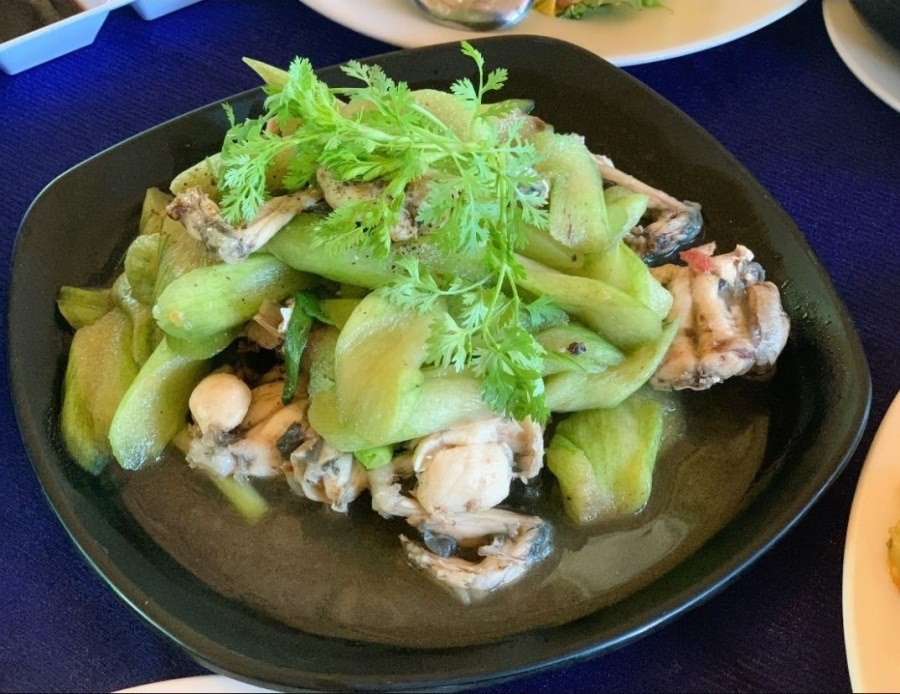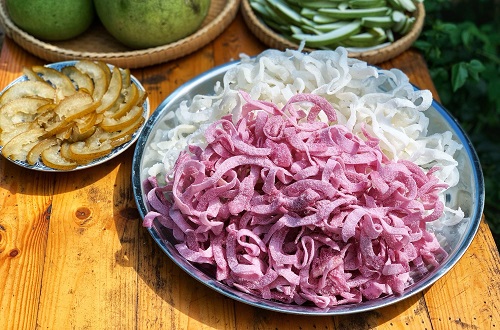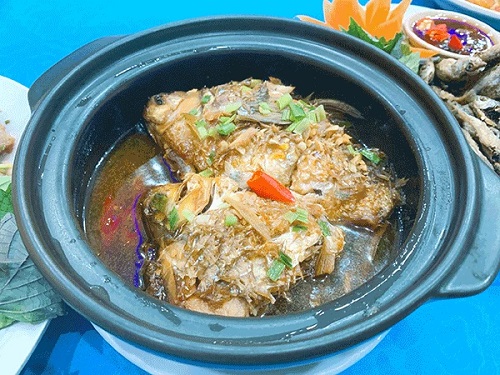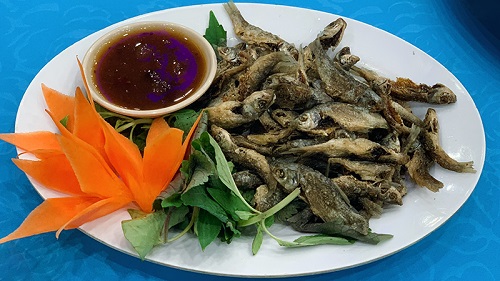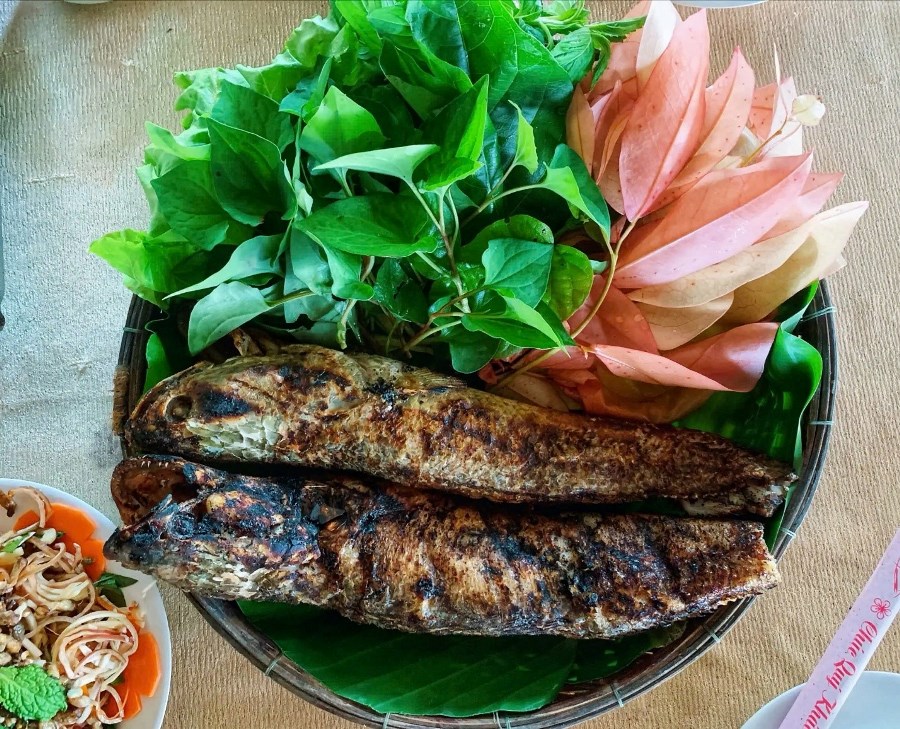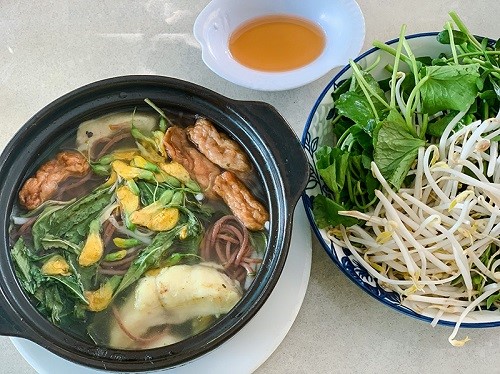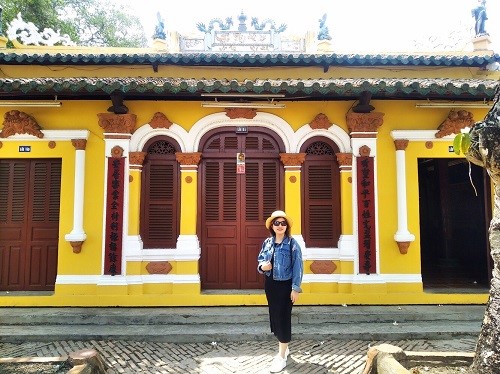
Binh Thuy Communal Temple
Binh Thuy Communal Temple, also known as Long Tuyen Communal House, is located on Highway 91 (Binh Thuy ward, Binh Thuy district), about 5km from the center of Can Tho city. Binh Thuy Communal Temple, whose original name is Long Tuyen (which means lying dragon), was built in 1844. Then, it has been rebuilt and was completely renovated in 1910. Nowadays, people often call it Binh Thuy Communal Temple because it is located in Binh Thuy Ward.
The architecture of Binh Thuy Communal Temple is different from the communal house in the North. The front and back of the houses are in a square shape, and each direction has 6 rows of big, slippery, slightly sloping columns. Inside the communal house, there is an altar system that is appropriately arranged. Each altar is separated by walkways. On both sides of the altars, there are columns carved with eye-catching patterns like dragons, flowers, peonies, and more. Along with that is the system of couplets, diaphragms, hammocks with traditional patterns such as dragon, phoenix, chrysanthemum, and apricot. All of the magnificent arts have made the space of the communal temple more charming with the ancient vibe, sacred, and full of aesthetics. On the outside, the communal house was built in the style of the Chinese word (一) “Nhat”. On the top of the communal house is a pair of statues of dragons, pearls, unicorns, letters, and mascots.
Insite the ancestor worshipping house, there are altars which are dedicated to Nghi Ha and Nghi Trung. In the square house, there are altars dedicated to Huong Chuc, Tien Giac, and Hau Hien. The middle room dedicated to Hau Than is very close to the rear partition anh Huu Ban and Ta Ban altars are on either side. An opera house for performances of classical Vietnamese drama was built in front of the communal house. Outside the worshipping house, there are two large shrines worshiping Than Nong and Than Ho. Near the gate, there are two shrines worshiping the God of the Forest and the God of the Canal. Later, the communal house was also dedicated to the spirits of the land, such as Dinh Cong Trang, Nguyen Trung Truc, Bui Huu Nghia, and so on.
Annually, Binh Thuy Communal Temple has two main festivals: Thuong Dien and Ha Dien (sacrifice-dedicated ceremonies to the God of Earth at the beginning of farm work) in the fourth month and the twelfth month in the lunar year. Such a rich and diverse way of worshiping gods shows the cultural fusion, and at the same time reflects the openness, generosity, tolerance of all differences, and sincere convergence of the quintessence of the people here. With all of the incredible art values and long history, Binh Thuy communal temple was recognized as a National Architectural and Artistic Vestige in 1989.
Nam Nha Pagoda

Located at 612, Cach Mang Thang Tam Street, Bui Huu Nghia Ward, Binh Thuy District, Nam Nha Pagoda is one of the must-visit attractions when coming to Can Tho.
Nam Nha Pagoda impresses visitors with its ancient and majestic architecture, many big green trees, a dreamlike river, and poetic river landscape. Coming here, you can feel a sense of relaxation and tranquility.
Nam Nha Pagoda, constructed in 1923, is also called Nam Nha Duong or Minh Su pagoda because of following Minh Su religion. In the period of the resistance war against the French, the pagoda became famous as a place to practice and nurture the patriotic movement and to produce an intellectual class with patriotism and indomitable spirit against invaders. Over time, the pagoda today is no longer the grandeur of the past, but one of the few ancient buildings with intact value. The pagoda consists of three main areas: the house of Chinh Dien, the house of Dong Lan, and the house of Lan. The Main Hall is a place for worshiping, including three bronze statues of Buddha, besides the pagoda, the pagoda is kept relatively large and rare, especially wooden tables and chairs in the temple with carved lines. exquisite illustrations of the Southern past. In front of the pagoda gate, the three words "Nam Nha Duong" and 2 sentences on the two sides of the gate are hidden like the shadow prints on the banks of the Binh Thuy River, the more the village becomes more and more tranquil tranquility of the temple. Unlike pagodas in our country, Nam Nha Pagoda is only vegetarian, does not shave its head, does not wear tan, and takes the practice of moral virtue as a guideline, so the atmosphere in the temple is always simple and close. Nam Nha pagoda was recognized by the Ministry of Culture and Information as a national historical relic in 1991.
Visiting Nam Nha Pagoda is not only for pilgrimage to the Buddha, admire the ancient beauty of the pagoda, but also to better understand the revolutionary activities of our father, better understand a fierce resistance period; thereby helping us to remember to our ancestor who sacrificed themselves for the independence and freedom of our nation.
Binh Thuy ancient house

Binh Thuy ancient house is located at 142/144 Bui Huu Nghia, Binh Thuy, Can Tho. It is an indispensable destination for anyone who is visiting Can Tho. The ancient house was built in 1807 by the Duong family in a sophisticated French architecture style.
This old house is one of the few old houses that still stay intact to this day, and has great value in supporting research about the culture and customs of the people of the river delta. The most special thing about Binh Thuy ancient house is that it bears the imprint of clear feng-shui of the East, creating a harmonious combination between two cultures East-West.
The house is built on a total area of about 6,000 square meters in the direction of East-West, surrounded by well-trimmed bonsai and flowers that bloom in all four seasons. This design makes the house look nostalgic, unique and lively, romantic at the same time. The whole space includes 3 main houses: The front house (5 rooms) - used as a reception place on solemn occasions, decorated in European style. The middle house (5 compartments) - 3 compartments are arranged as a place of worship according to tradition, 2 compartments are used for living. The following house - used as a commonplace, along with small scenes inside and outside. Different from many other houses, the facade of Binh Thuy ancient house does not have a direct staircase, but is designed on both sides that lead to the main door. Going up the stairs, you can see a series of windows that ensure ventilation for the house. The stairs are also decorated with a lot of flowers on the side. The interior of Binh Thuy ancient house was directly arranged by the owner according to the law of symmetry. All floor tiles are shipped directly from France. Separating the three main parts of the house is a system of shafts and triplets made of wood. Although the architecture of the house is decorated in European style, the most important place is the Vietnamese worship altar. This shows that there is a harmonious East-West cultural communication, selectively expressing the sophisticated aesthetic tastes of the owner.
Thanks to its unique space which is blended between modernity, ancient, and luxury, the house has been selected for the filming of many successful cinematic works, such as ‘Nguoi Dep Tay Do’ (A Beauty of Tay Do), Nhung Neo Duong Phu Sa (Alluvial Ways), and Nguoi Tinh (L’amant or The Lover) - a famous French drama film. With its architectural and historical value, Binh Thuy ancient house has been recognized as a “national-level artistic relic” in 2009.
Source: Tourismcantho.vn - Translated by Hoang Dat







